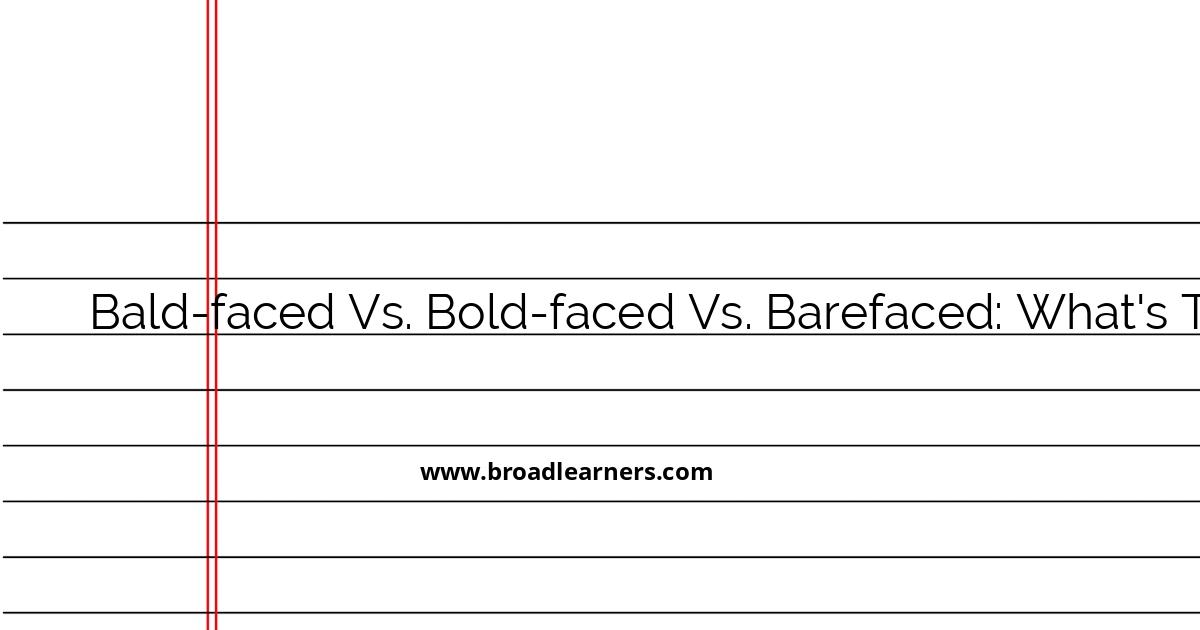The English language is replete with similar-sounding phrases that can be easily confused, especially if their meanings are closely related. Three such phrases are bald-faced, bold-faced, and barefaced. Understanding the subtle differences among them is crucial for precise communication. Here, we break down each term, explain their meanings, and provide examples to clarify their usage.
- Bald-faced
The term bald-faced typically refers to something that is shamelessly obvious or blatant, especially when it comes to lies or deceptive actions. Its origins date back to North America, where it gained prominence as a colloquial expression.
Example:
He told a bald-faced lie about his whereabouts, even though we had clear evidence to the contrary.
- Bold-faced
The term bold-faced is often associated with typography, where text is written in a bold type to stand out. However, it's also used in a metaphorical sense to describe actions or lies that are confidently and daringly executed.
Example:
She looked him straight in the eye and told a bold-faced lie, showing no remorse for her dishonesty.
- Barefaced
The term barefaced shares similarities with bald-faced and is used interchangeably in some regions. It refers to an action done openly, without any attempt at concealment. Historically, barefaced denotes audacity and implies a lack of shame in the way one conducts themselves.
Example:
His barefaced denial of the facts left everyone in disbelief.
Now, let's explore the nuances and interchangeable usage of these terms:
While bald-faced and barefaced are often used synonymously in informal English to describe a shameless lie, bold-faced emphasizes the confidence or audacity displayed in deceiving others.
The use of barefaced is more traditional and was historically more common than bald-faced, which originated later.
Despite their differences, all three expressions convey a sense of audacity or shamelessness, particularly in contexts involving deceit.
Understanding the nuances between these terms can enhance your communication skills, allowing you to choose the most appropriate expression for the context. Remember the subtle connotations of each term to ensure clarity and effectiveness in your language use.

Did I miss anything? Respond below